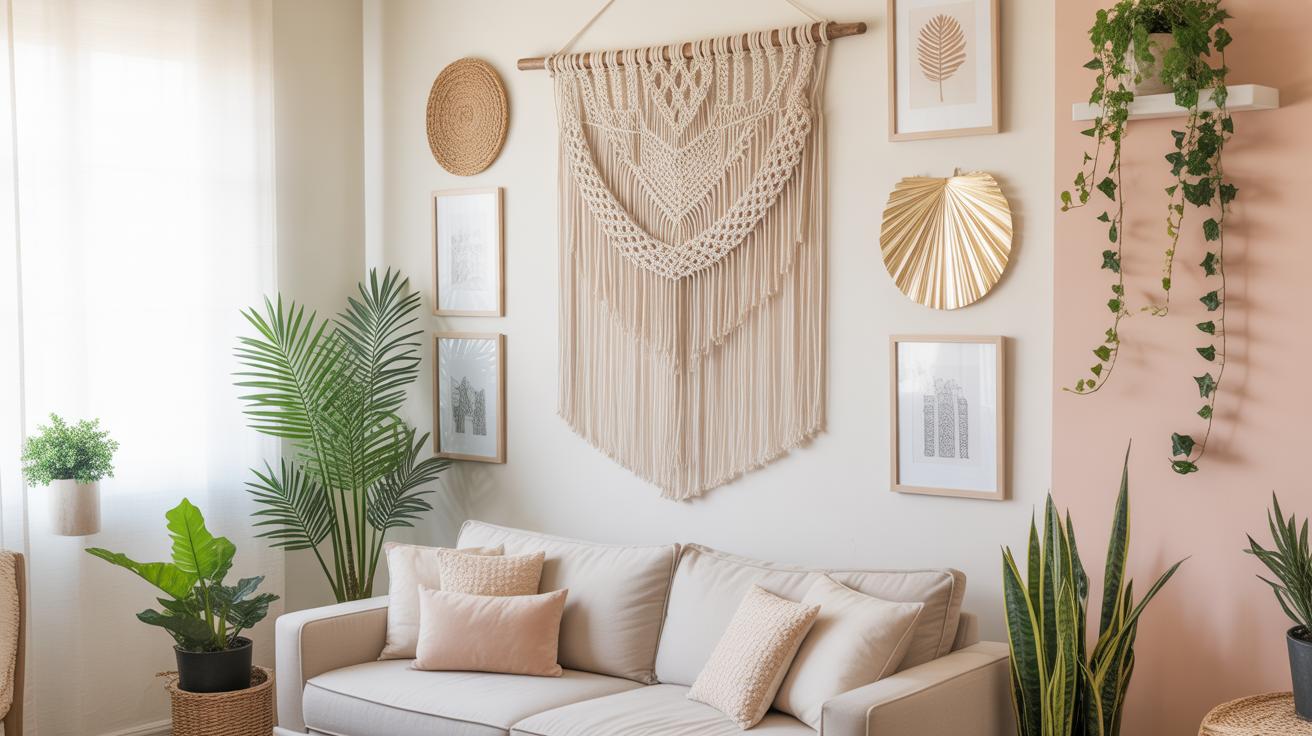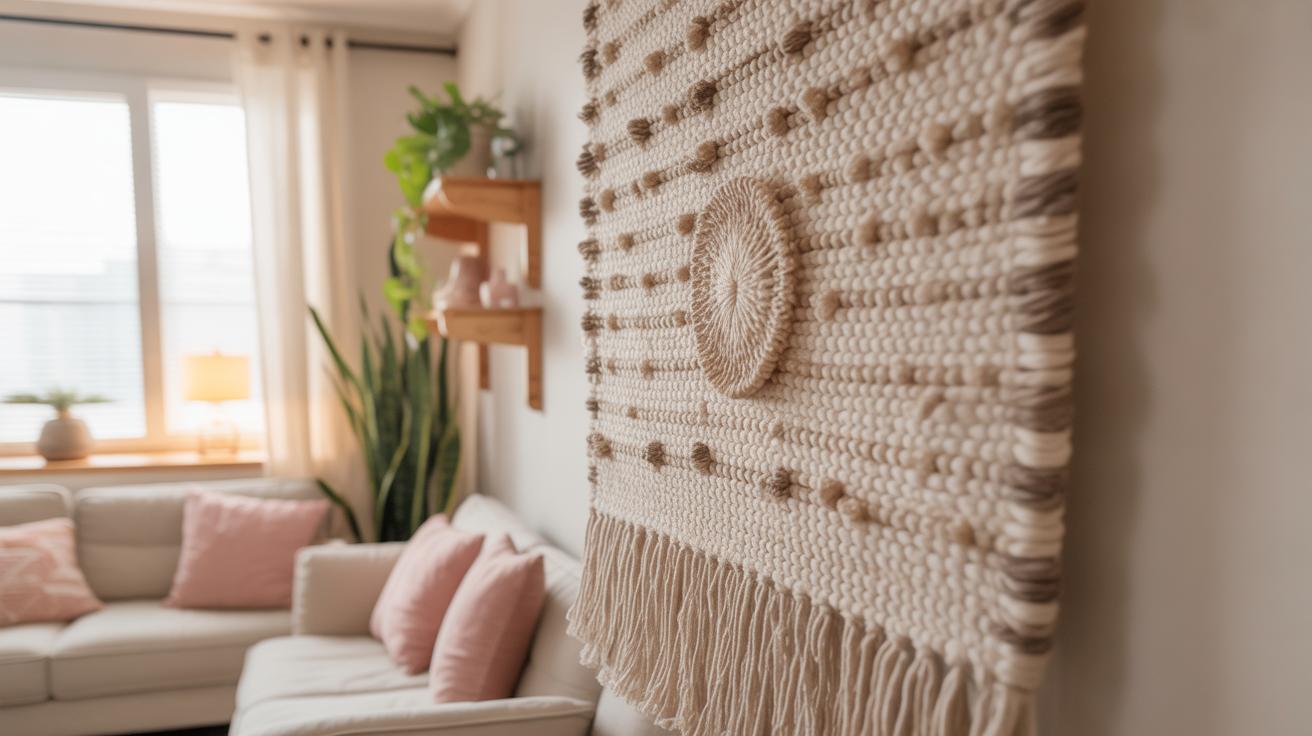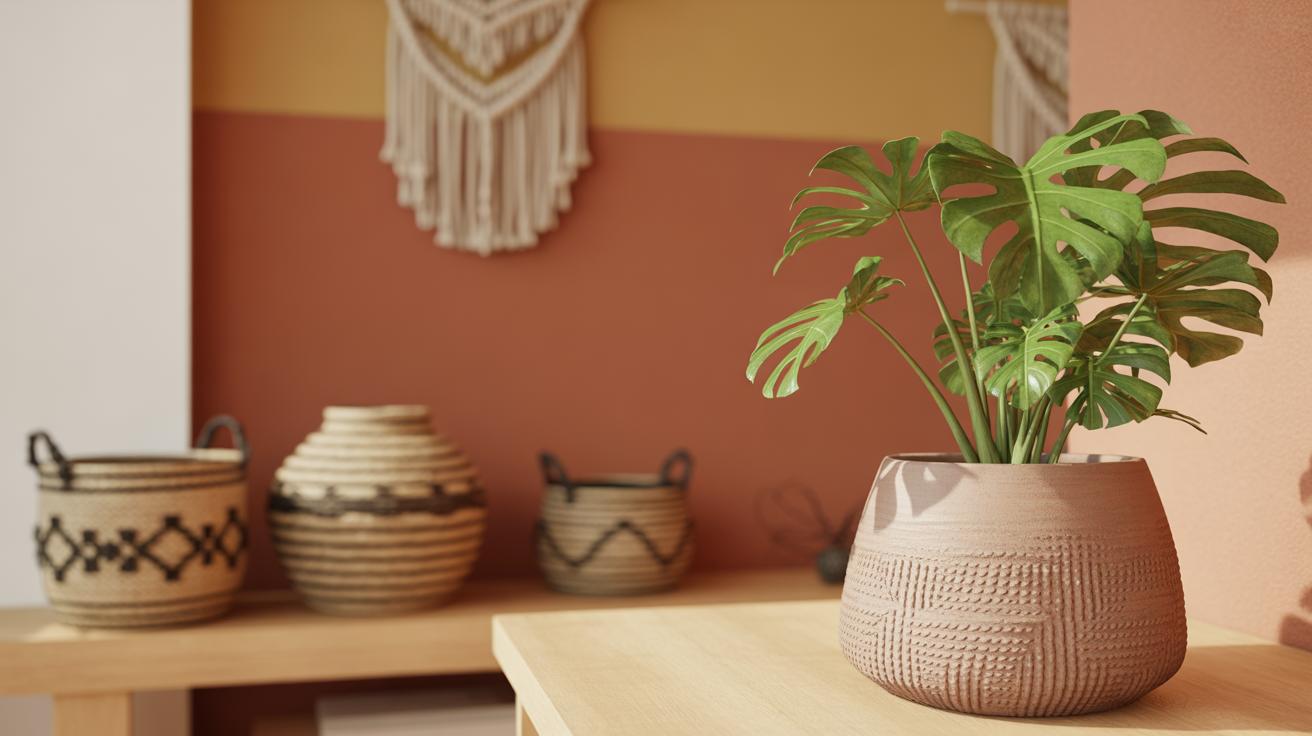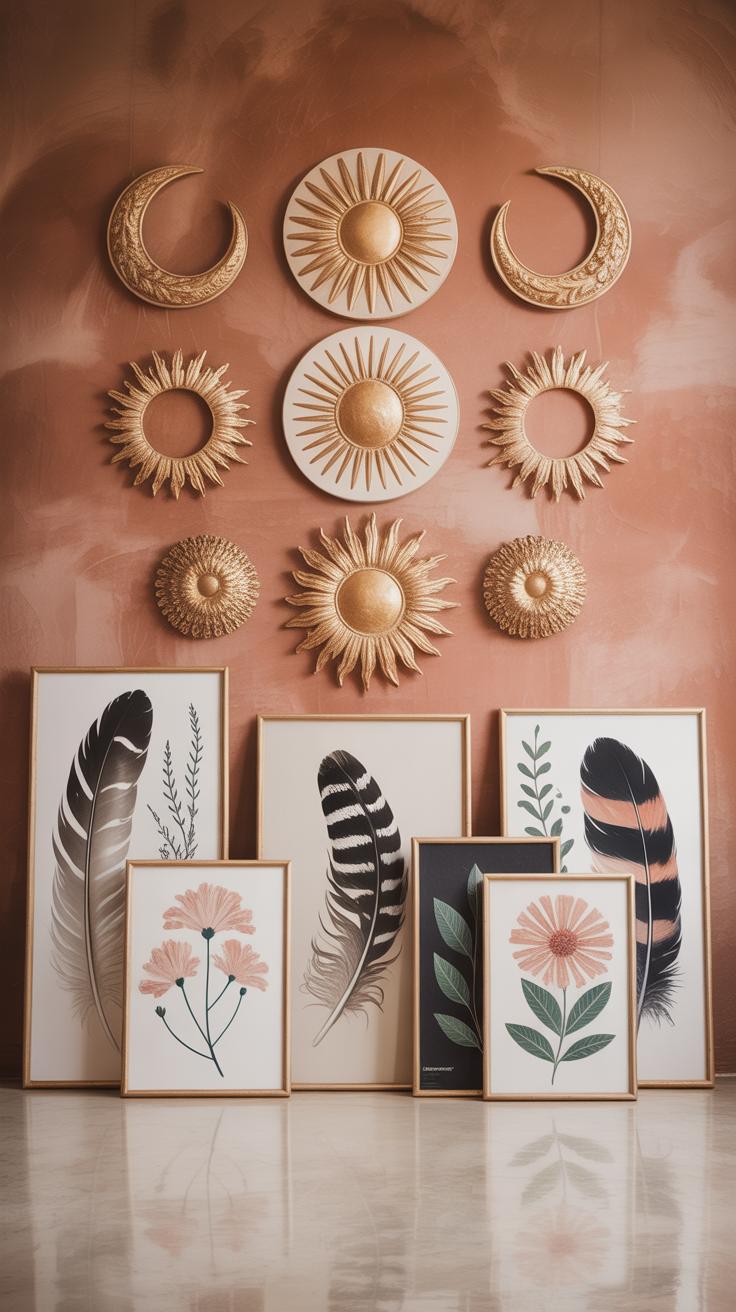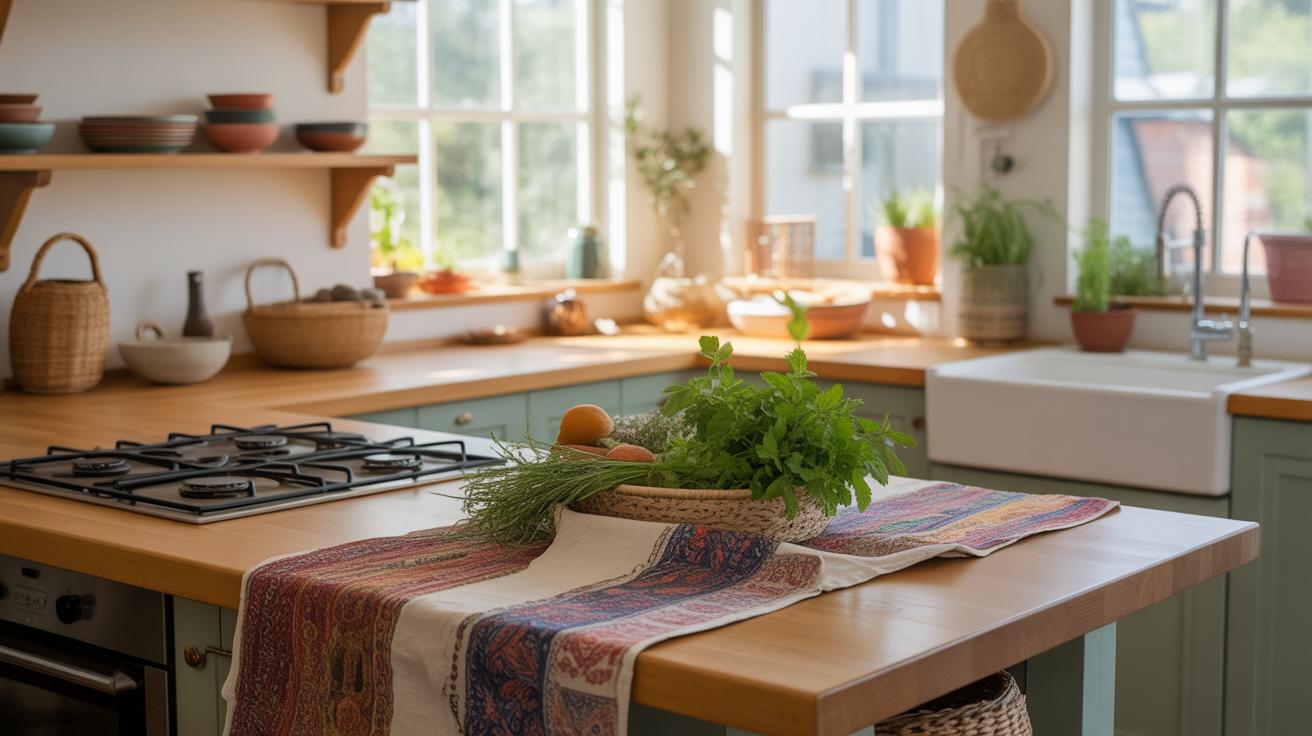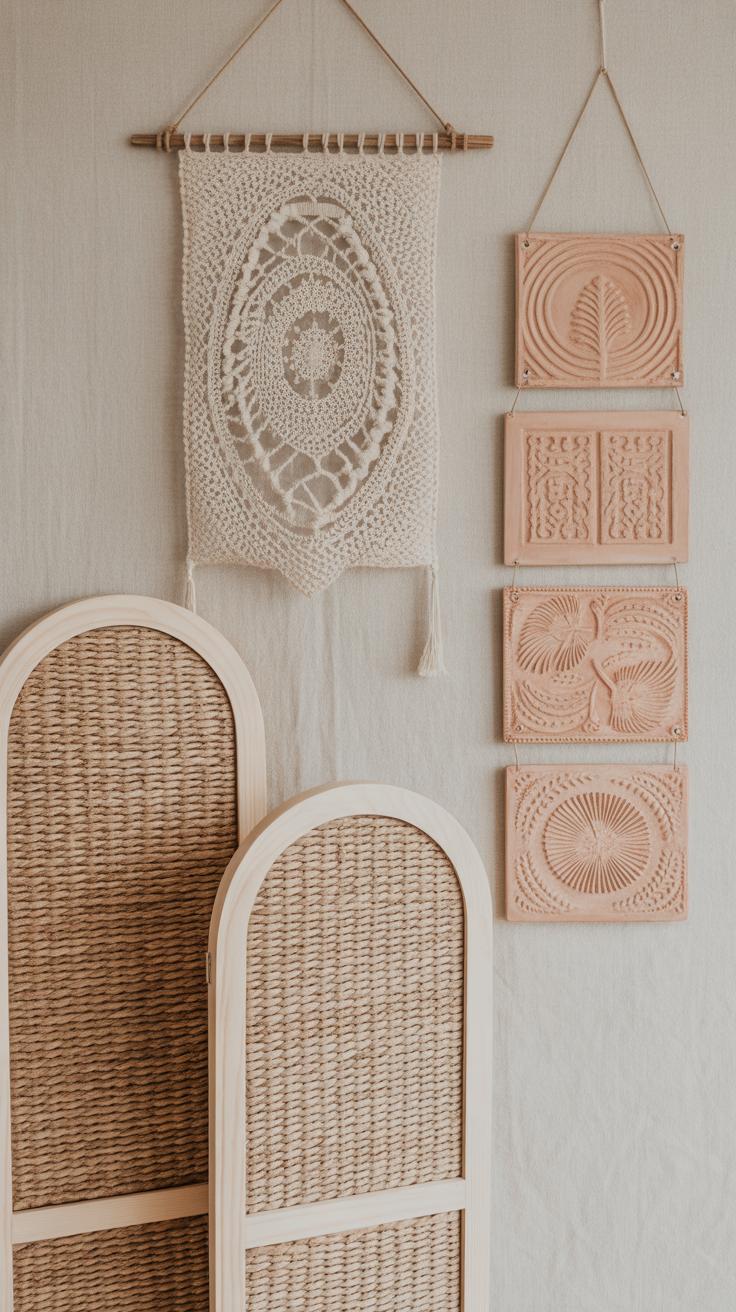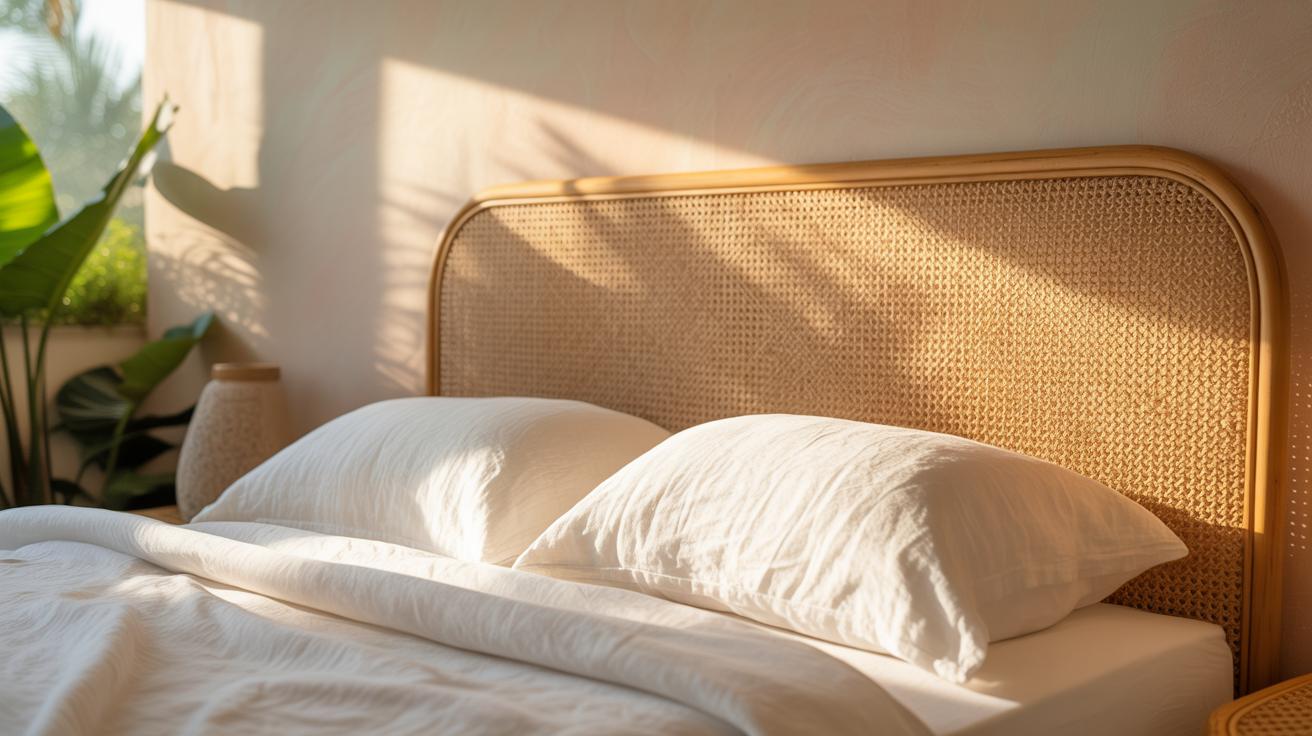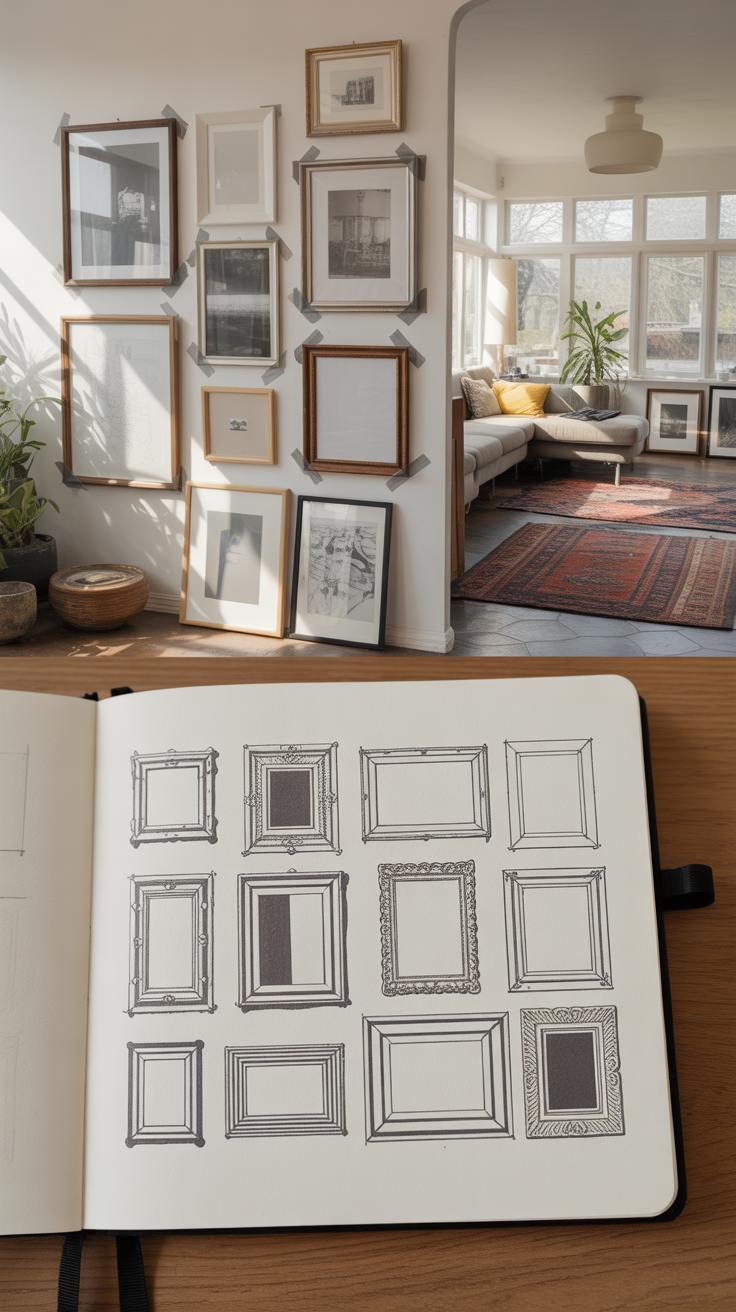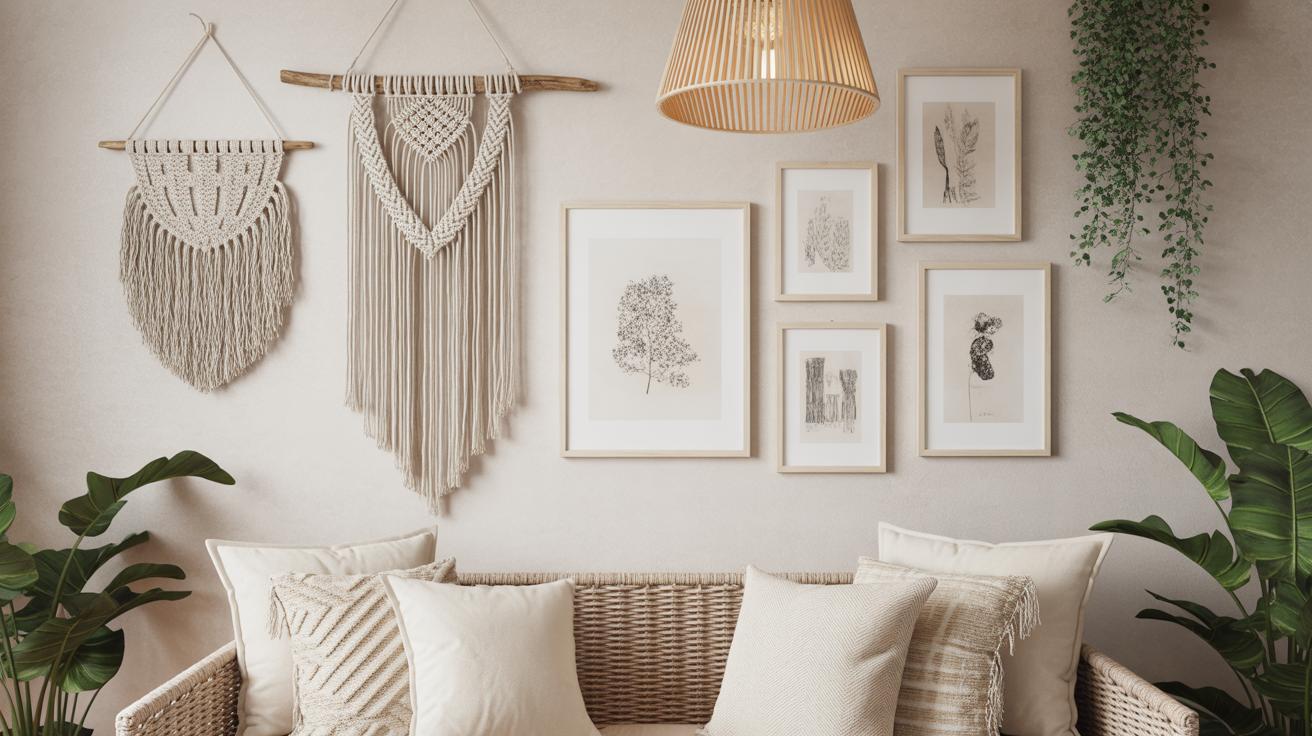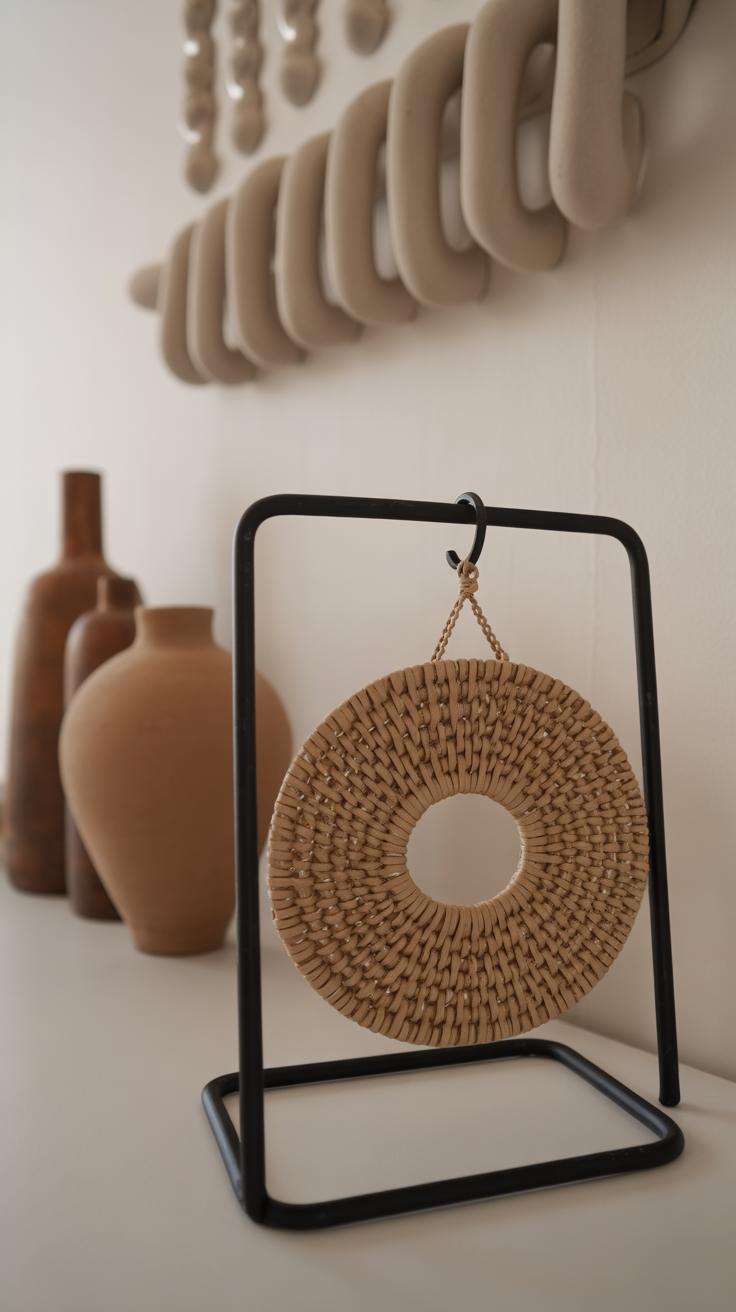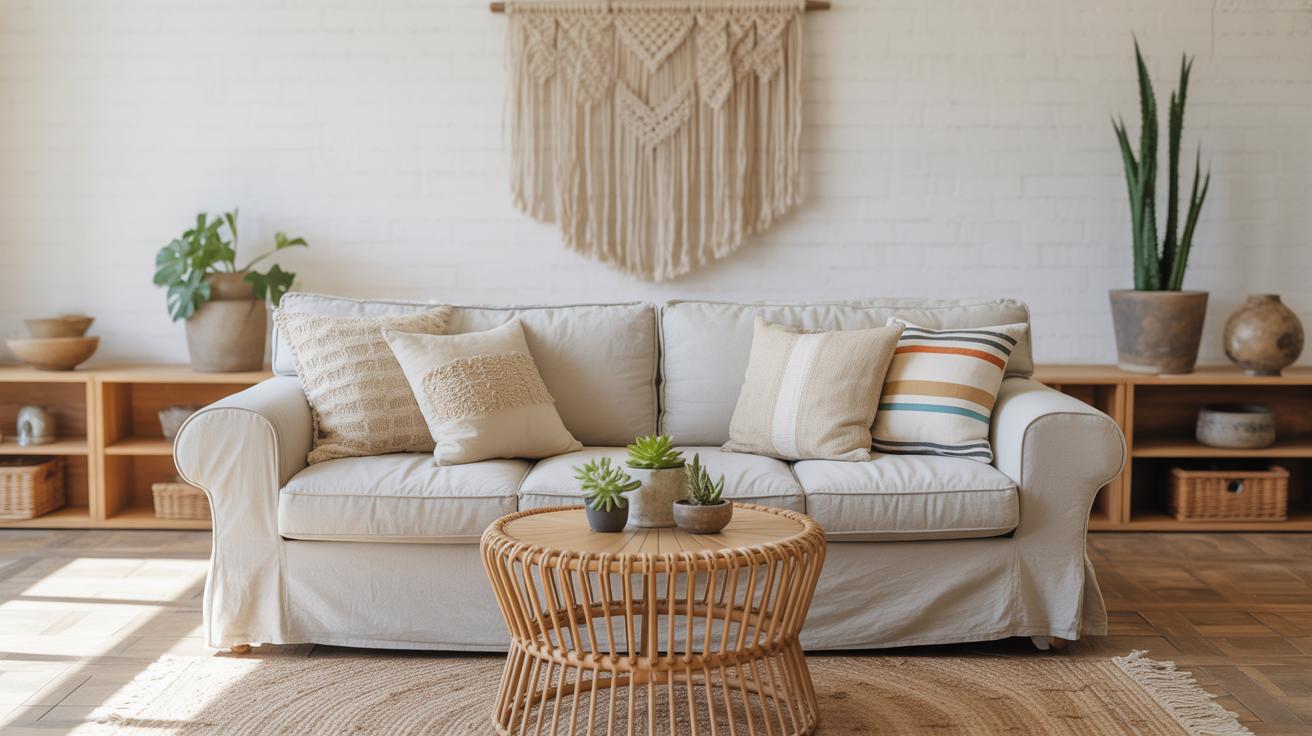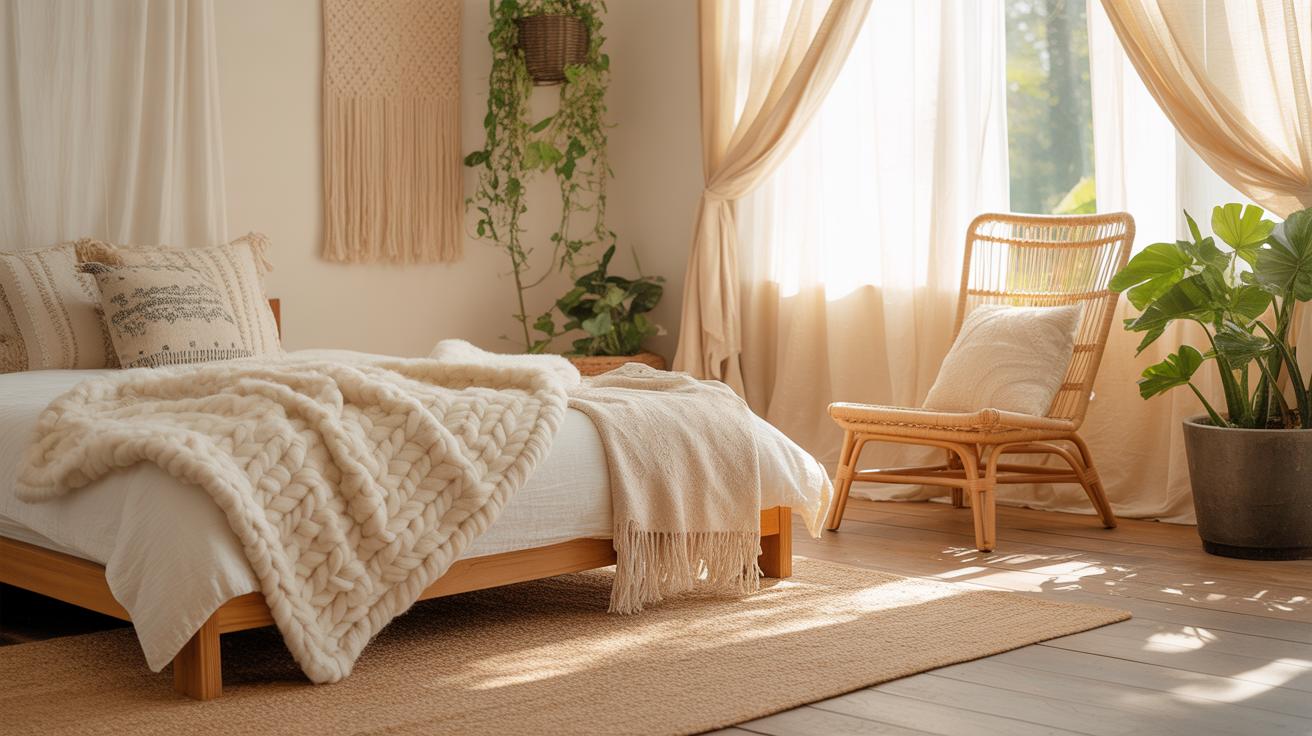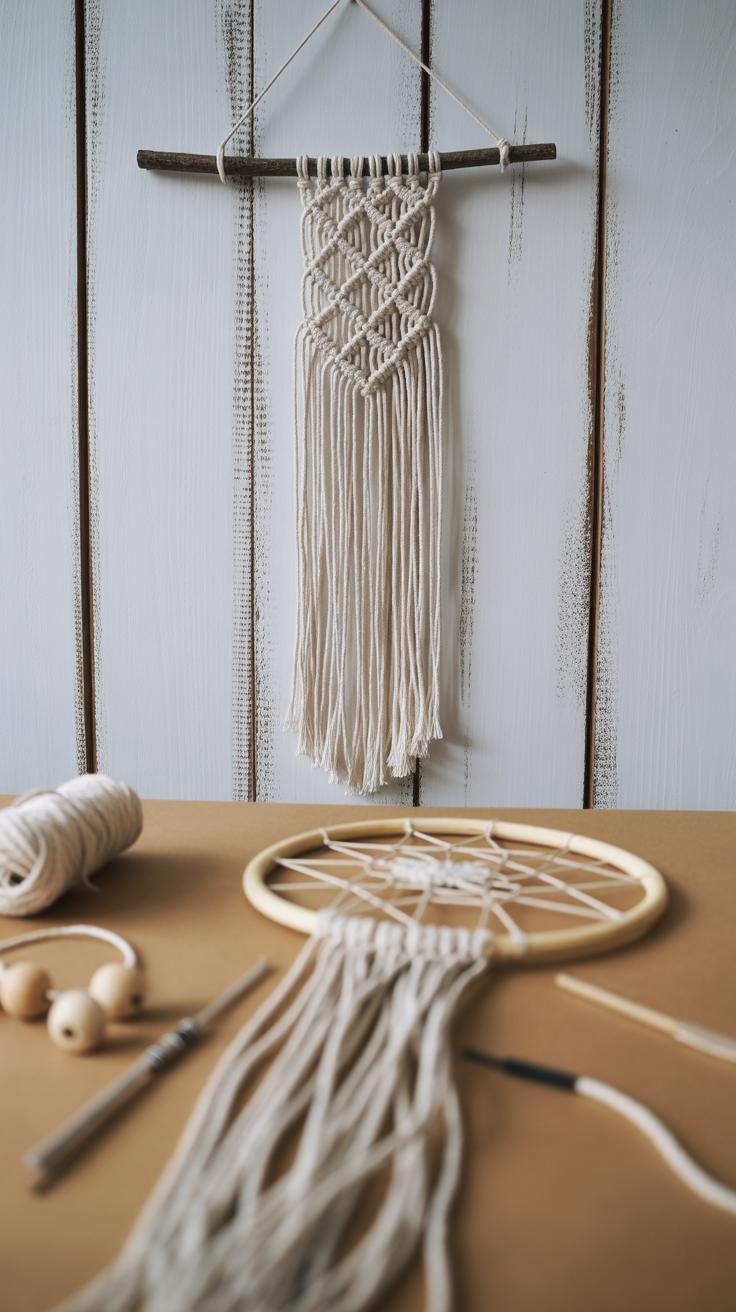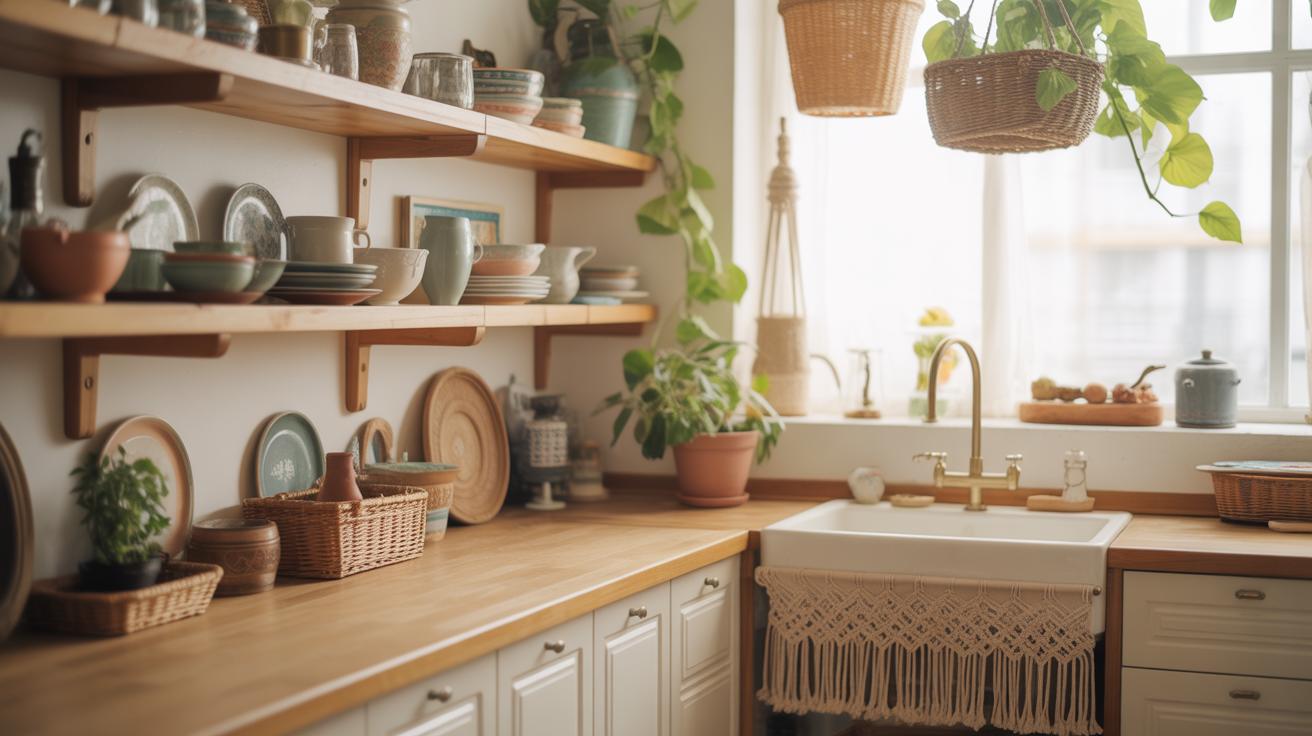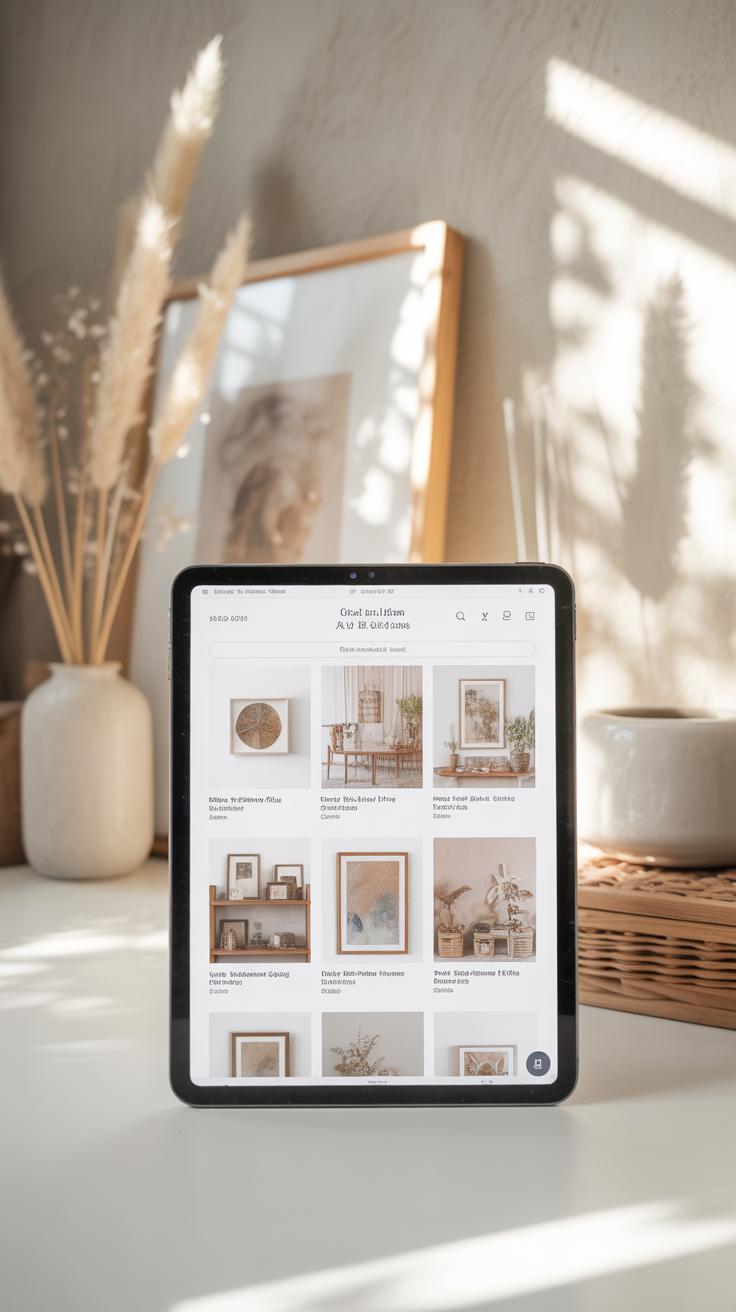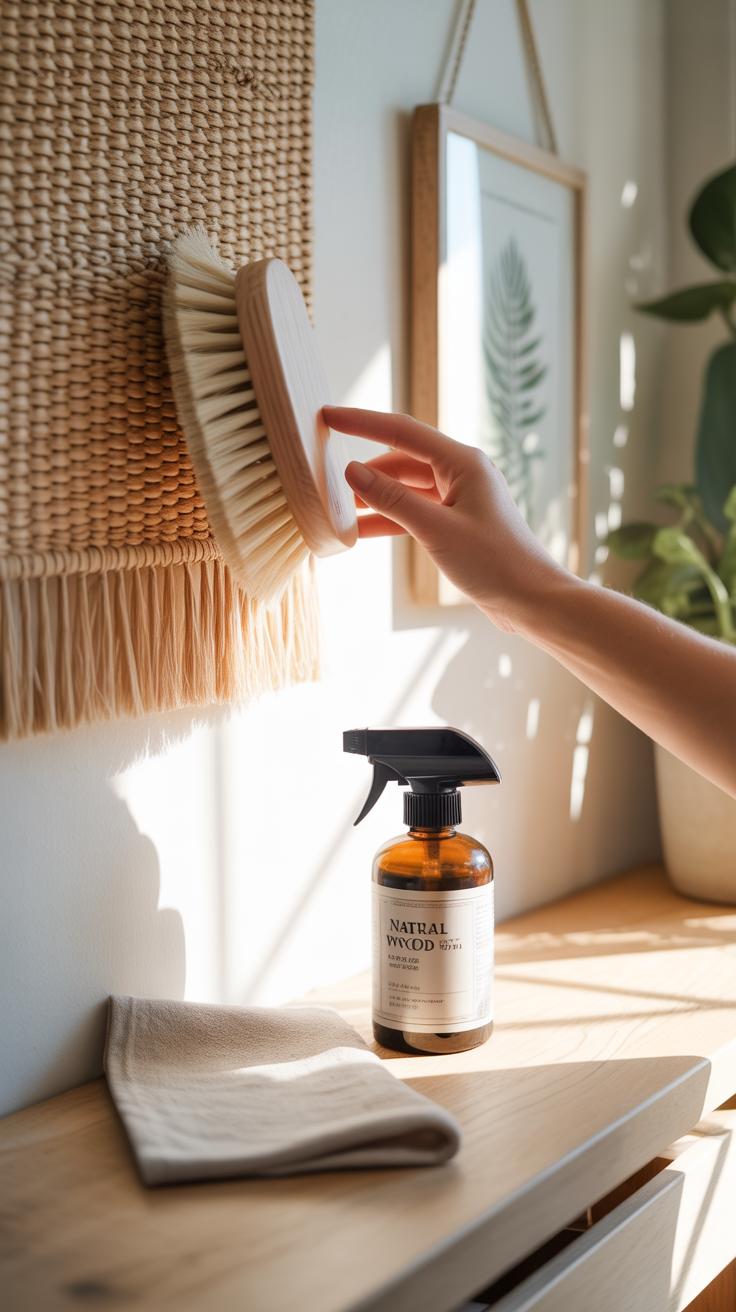Introduction
Stunning Boho Wall Art Ideas To Personalize Your Home offer a simple path to make your space feel truly yours. This style, known as Bohemian or boho, embraces freedom, creativity, and a mix of unique elements. It draws inspiration from nature, art, and cultures worldwide to create a relaxed, inviting home atmosphere.
Choosing the right boho wall art can transform any room. It connects your personal story with colors, textures, and patterns. This article explores how you can use boho wall art to express your style and make your home more welcoming and interesting.
Choosing the Right Boho Wall Art for Your Home
Picking boho wall art that fits your space can feel overwhelming at first—there’s so much variety. But it’s really about balancing your room’s vibe with what sparks something in you.
Start by thinking about the size of your wall. A large piece can become a focal point, especially in a simple room. But if your space is smaller or already busy, maybe go for a collection of smaller, eclectic pieces that tell a story together.
Consider your existing décor—not to match it exactly, but to complement or contrast it in a way that feels natural. For example, in a room with lots of natural wood or plants, artworks with woven textures or earthy tones often feel right at home.
Your personal taste matters here—do you lean more toward handcrafted items, like macramé hangings or woven baskets, or do you prefer bold wall prints with global patterns? Neither is better; it depends on what resonates with you. Sometimes combining both can work, if you don’t mind a slightly chaotic feel.
Think about the mood you want to create. Are you after calm and cozy, or do you want your walls to burst with color and energy? This decision will guide your choice of color palettes and patterns, whether muted earth tones or bright, cultural prints.
Don’t rush. Live with your space a bit and notice what your eyes are drawn to. Sometimes, what you thought you wanted initially doesn’t quite fit after all.
Boho Wall Art for Your Home
Picking boho wall art isn’t just about finding something that looks nice—it’s about fitting the piece into your space in a way that feels natural, almost like it was meant to be there. Room size plays a big role here. A tiny print might get lost on a large, open wall, while an oversized canvas can overwhelm a cozy nook. Think about the scale before you decide.
Style matters too. If your room already has a lot going on with patterns or colors, simpler, more muted boho pieces might suit better. On the other hand, a plain room might welcome bold, eclectic designs that stand out. I once tried hanging a detailed macramé wall hanging in a minimalist space and it added just the right texture without clutter.
When it comes to personality, don’t hesitate to pick art that speaks to *you*. It could be a piece echoing your travels, favorite plants, or even motifs that remind you of moments or people. Selecting art that connects to your story gives the room an extra layer of meaning, making your home feel more lived-in and personal.
Here are a few tips you might try:
- Measure your wall space and envision the piece at different sizes before buying.
- Match art colors or textures with key elements in the room—pillows, rugs, wood tones—to unify the look.
- Choose pieces that reflect what you love, even if it feels a bit unconventional.
At the end of the day, think less about “rules” and more about what feels right to you. What boho art would make you pause and smile every time you enter the room? That’s the one to go for.
Popular Themes in Boho Wall Art
Nature and Boho Art
Boho wall art often draws heavily from the natural world. Plants, flowers, and even entire landscapes frequently appear as central motifs. It’s like bringing a touch of the outdoors inside, which can make a home feel more grounded and welcoming. For example, you might find a large print of tropical leaves or a delicate painting of wildflowers hanging in a living room. These elements don’t just decorate; they create calmness and a sense of connection to the environment.
Why does nature fit so well with boho interiors? Maybe because boho style thrives on organic shapes and a relaxed vibe. Natural elements reflect irregular lines and textures, which contrast nicely with more rigid modern décors you might have faced before. Plus, when you look at an image of a quiet forest or a field of daisies, it almost invites a moment of pause. That feeling alone can enhance how you experience your space.
Symbolism and Patterns
Symbols like mandalas and tribal patterns add another layer of depth to boho art. Mandalas, with their circular, symmetrical shapes, often represent unity and balance, but they’re also visually captivating. The repetition of patterns can draw you in, making you almost meditate on the design itself. Many people don’t realize just how much these symbols can influence the mood of a room or even your mindset.
Tribal patterns, on the other hand, bring in stories and cultural richness. They often use geometric shapes and repetitive designs that carry meaning from various indigenous traditions. When these patterns appear on a wall hanging or printed canvas, they invite curiosity. You might find yourself wondering about their origins or meanings, which adds a unique, personal interaction with your space.
Sometimes, you might notice these elements combined—nature motifs woven with abstract lines or symbols—creating a mix that feels both ancient and fresh. It makes me think: are we drawn to boho art because it’s a reminder of something more primal or just because it’s visually interesting? Maybe a bit of both.
Materials Used in Boho Wall Art
When you think about boho wall art, the materials are as much a part of the style as the colors or patterns. Wood, textiles, metal, and recycled objects often come into play, each bringing a distinct texture and warmth to the space. Wood—rough-hewn or softly polished—feels grounding, almost like it connects you to the outdoors without stepping outside. There’s something honest about it, maybe a bit raw. In contrast, metal elements add a subtle edge, often crafted into sun motifs, feathers, or geometric shapes that catch light in interesting ways.
Textiles rank high on the list for me. Fabrics like woven cotton or linen, especially when hand-dyed or embroidered, add depth and softness. You can almost feel the threads and the slow work of hands in each piece. Rattan and wicker share this appeal, too—their natural fibers are tactile and visually relaxed. These materials reflect the ease of boho living, something less staged, more organic.
Upcycling fits naturally here. Using scraps of old wood, reclaimed metals, or worn fabrics brings creativity and an eco-friendly spirit into your home. It’s about making something new and personal out of what might have been forgotten. Each piece carries a bit of history, a story you can almost touch. I find it satisfying, both for the planet and for your walls.
How to Arrange Boho Wall Art
Arranging boho wall art can feel like putting together a puzzle where the pieces don’t quite match at first glance. But that’s the charm, right? The key is to strike a balance between contrast and cohesion, so your wall tells a story without feeling chaotic or too polished.
Creating a Gallery Wall
To make a gallery wall that clicks, mix different sizes and textures. Think woven baskets, framed prints, small macramé hangings, and maybe a carved wooden piece thrown in. Don’t be afraid to overlap slightly or vary the spacing. A tight grid can feel overly formal for boho.
- Start with a central piece as an anchor.
- Build around it with smaller items that share a color or theme.
- Vary the shapes—round mirrors, rectangular prints, organic forms.
- Use natural elements like dried flowers or feathers for texture.
And remember, you can always rearrange later. Sometimes it takes a couple of tries to get it right, or to find that ‘just right’ vibe that fits your room’s mood.
Single Statement Pieces
Sometimes less really is more. One bold boho piece—like an oversized woven wall hanging or an intricate mandala print—can instantly become the room’s focal point. It pulls attention and anchors the space without overwhelming it.
Place it where it naturally draws the eye, maybe above a sofa or bed. The surrounding décor can stay simple or even minimal, letting that one piece shine.
If you’re uncertain about a big piece, try leaning it on the floor against the wall first. It gives you a sense of scale and impact. I’ve done this more times than I can count—moving it around until it feels right.
Mixing Boho Wall Art with Other Decor Styles
Pairing with Modern and Minimalist Spaces
Boho wall art can bring an unexpected warmth to modern and minimalist rooms. Think of those sleek white walls and clean lines that sometimes feel a bit too sterile. Adding a boho piece with natural textures or intricate patterns interrupts that clinical feel, but without overwhelming the simplicity you’ve worked hard to create.
You might try hanging a macramé wall hanging or a woven textile with subtle earth tones alongside minimalist furniture. Suddenly, the space feels a little softer, more inviting—like it’s lived in, not just staged. This contrast gives the eyes something to rest on, making your plain walls more dynamic.
It’s interesting that the boho element never fully takes over the modern vibe—it complements it in a subtle tension. I sometimes wonder if people avoid mixing these styles because they think they’ll clash. But when done right, boho art adds a personal, tactile layer to otherwise stark spaces.
Combining with Rustic and Vintage Elements
When you bring boho art into rustic or vintage settings, things feel naturally in sync. The handmade, earthy qualities of boho pieces blend well with aged wood, distressed finishes, and antiques. Imagine a softly colored dreamcatcher or an embroidered vintage cloth hung above a reclaimed wooden mantle.
Boho art enhances the cozy vibe without making the decor feel dated. It’s like adding a thread that ties the past and present. You get that lived-in comfort but with a touch of artistic flair.
Pairing them encourages you to experiment with layering textures and materials—woven baskets, faded quilts, and framed pressed flowers alongside your wall art. That mix creates a warmth that invites you to stay a little longer in the room—maybe even linger with a good book or a cup of tea.
Have you ever noticed how some rooms just feel “complete” when boho touches meet rustic charm? Maybe it’s not about following strict rules but trusting what feels right.
DIY Boho Wall Art Ideas
Creating your own boho wall art can feel surprisingly doable, even if you don’t consider yourself particularly crafty. Sometimes, starting small helps—simple weaving or macramé pieces can bring a lot of texture and warmth to a space without overwhelming you.
Simple Weaving and Macramé
If you want to try weaving, start with a small wooden frame or even an old embroidery hoop. Use yarns in earthy tones or bright accents depending on your mood. Just tie the yarn back and forth, adding in thicker strands or even some beads for character. It’s more forgiving than it looks; mistakes can add charm.
Macramé requires just a few basic knots. Learning the square knot or half hitch can open up a handful of design options. Try making a small wall hanging with cotton cord, maybe adding feathers or wooden beads. The rhythm of knotting is oddly calming, though it can get fiddly at times.
Painting and Pattern Projects
Painting boho-style doesn’t have to mean complex drawings. Simple shapes like arrows, circles, or triangles arranged in patterns can be striking. Use natural colors—think terracotta, beige, or muted greens. Wooden panels work well to add rustic texture. Canvas is easier but sometimes less interesting.
Try freehand geometric patterns or even dots. Don’t worry about perfect lines; boho art leans into imperfect, hand-made looks. If you feel stuck, look at tribal prints or native craft motifs for inspiration, then make it your own with colors and scale.
Where to Buy Boho Wall Art
Shopping at Artisan Markets
Artisan markets offer something you just can’t find in mass-produced stores: genuine, handcrafted boho wall art with character. When you shop here, you’re often talking directly to the artist, hearing their story, maybe even learning a bit about the techniques involved. That personal connection makes the piece more than just decoration—it feels alive, almost like it has a soul.
These markets tend to feature a wide variety, from woven hangings to painted canvases and mixed media pieces. You might find something that’s completely unexpected, which can be great if you want your wall art to add a unique vibe. Of course, prices can vary—sometimes, you pay a bit more. But often, I think that’s worth it for the authenticity and the chance to support local creativity.
Finding Online Treasures
Online shops bring the global boho style right to your doorstep, which is pretty practical when local options feel limited or repetitive. Places like Etsy, Society6, or even boutique online craft shops specialize in bohemian art that ranges from vintage-inspired prints to modern abstract pieces.
When browsing online, check for honest reviews and ask questions if you’re unsure about materials or size. Shipping times and costs can be tricky, especially if you’re buying from small sellers overseas. But I’ve found some absolute gems this way that I couldn’t get locally. It’s a bit of a treasure hunt—you never know what you might stumble upon until you dive in.
Caring for Your Boho Wall Art
Boho wall art often features textiles and natural materials that need a bit of special attention to keep their charm intact. You might find that dusting them gently with a soft brush or using a low-suction vacuum can prevent dirt buildup without damaging delicate fibers. Avoid harsh chemicals; a mild, damp cloth sometimes works better—though be cautious not to soak the material.
Moisture and sunlight are the real culprits when it comes to fading colors and degrading textures. Placing your pieces away from direct sunlight or using UV-protective window treatments helps preserve their vibrancy longer. At the same time, controlling humidity levels can prevent mold or warping, especially for natural fibers like jute or cotton.
It crossed my mind that rotating your art pieces occasionally might reduce uneven fading and maintain their overall look. Plus, storing textiles carefully when not on display—rolled in acid-free paper rather than folded—can save you future headaches.
Do you ever wonder if some boho art is just meant to age a bit, developing a worn look that adds character? Maybe care is about balance, not perfection.
Conclusions
Boho wall art brings charm and individuality to your living space. By mixing different styles, materials, and colors, you can make your home a reflection of your personality. From choosing the right pieces to displaying them thoughtfully, every step counts in achieving the bohemian look.
Use this article’s ideas to start your boho wall art journey today. Your unique walls await a creative touch that makes your home feel special and comfortable every day.

